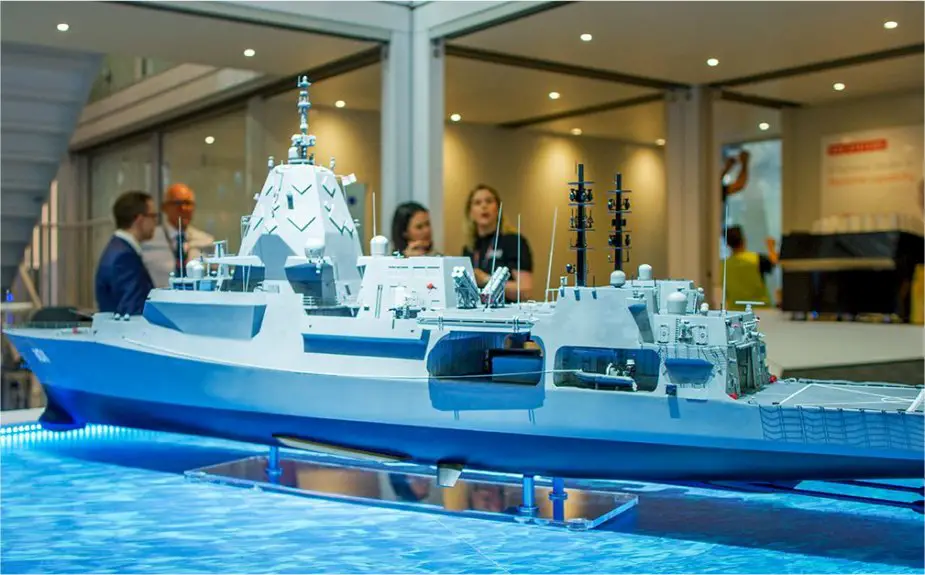According to a PR published by Rohde & Schwarz Australia on May 3, 2022, the firm will design and manufacture an integrated communications system (ICS) for the Royal Australian Navy (RAN) Hunter Class Frigate Program (HCFP), following the signature of a contract with BAE Systems Australia’s (BAESA) maritime division that allows for the addition of scopes of work overtime.
Follow Navy Recognition on Google News at this link
 Model of future Hunter class frigate (Picture source: BAE Systems)
Model of future Hunter class frigate (Picture source: BAE Systems)
Under the initial scope of the early engineering contract, Rohde & Schwarz Australia will provide in-country program management, systems engineering, integration, installation, and verification services for the acquisition and introduction into the service of the ICS.
The Hunter-class frigate is a future class of frigates for the Royal Australian Navy (RAN) to replace the Anzac class. Construction is expected to begin in 2022, with the first of nine vessels to enter service in 2031.
The Hunter class frigate will be modified to meet Australian requirements, including incorporating the Aegis combat management system, CEAFAR2 phased array radar, Australian communications systems, and the integration of the Seahawk Romeo Maritime Combat Helicopter.
It will be constructed on an acoustically quiet hull and feature unique sonar capabilities, modular digital design, and open systems architecture to facilitate through-life support and upgrades as new technology develops.
The Hunter class frigate is being designed for maximum versatility and flexibility in operational roles, from humanitarian and disaster relief operations to high-intensity warfare.
The Hunter-class frigate will have an 8,800-tonne (8,700-long-ton) full load displacement and will be approximately 150 meters (492 ft 2 in) in length. The vessel will be capable of sailing in excess of 27 knots (50 km/h; 31 mph) and will have a full complement of 180 crew.



